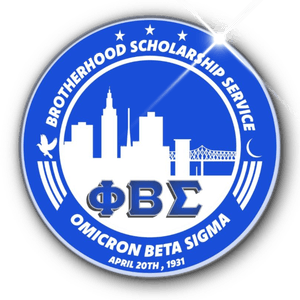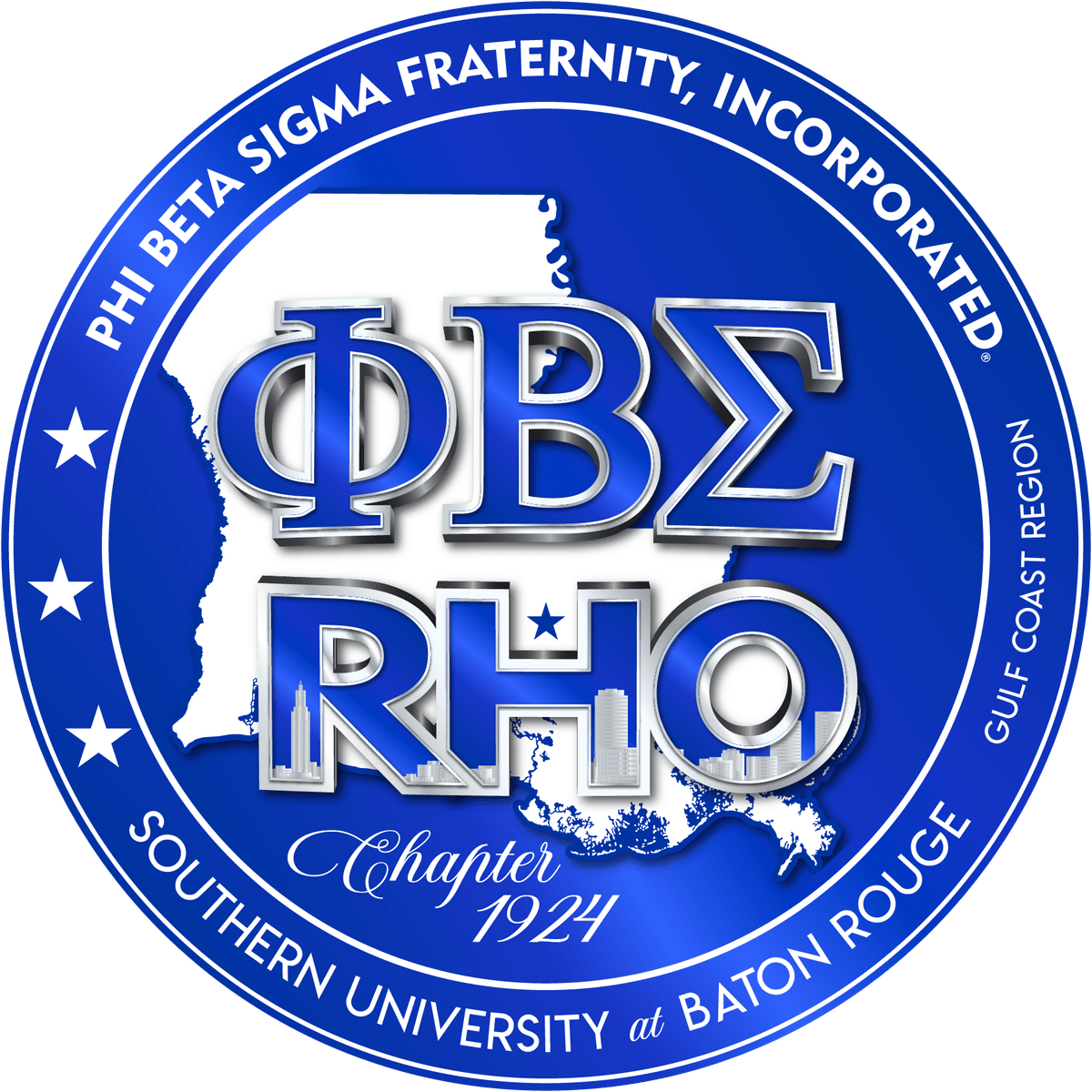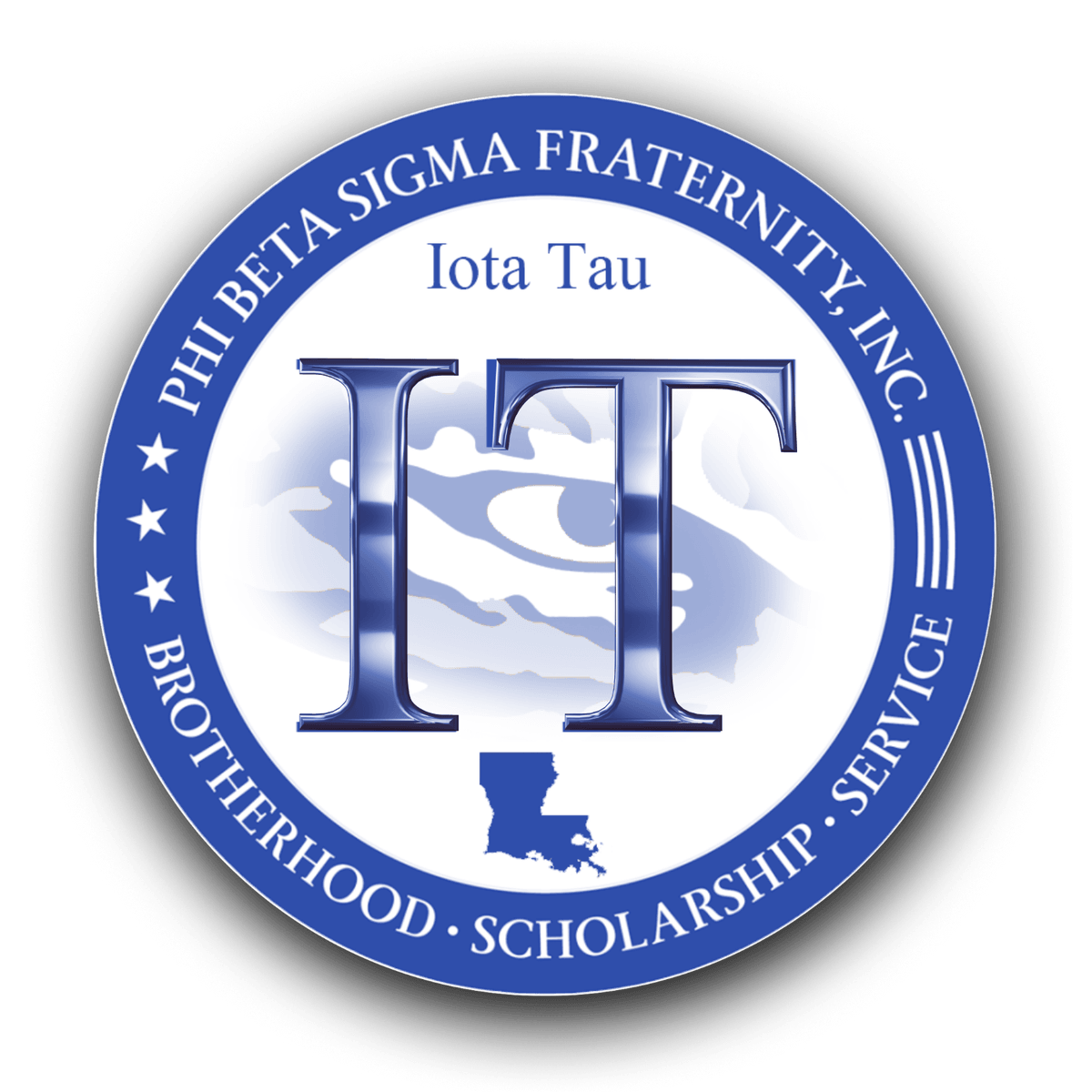


Phi Beta Sigma Fraternity, Inc.
Omicron Beta Sigma Chapter
- …


Phi Beta Sigma Fraternity, Inc.
Omicron Beta Sigma Chapter
- …


Rho Chapter
In 1924, Mr. Cornelius King, Director of Agriculture, saw the interest displayed in the Sigma Beta Club. Withthe increasing popularity of fraternities in Negro colleges, Mr.King undertook the task of securing a Chapter of Phi Beta Sigma Fraternity at SouthernUniversity. In the latter part of 1924, he was successful. With Mr. King as sponsor and the latter R. S. Shade as President, the Rho Chapter began its task of “Culture For Service and Service for Humanity”. The charter members were: Ralph N. Jones, N. S. Harrison, George Allen, George Mills, Harold Johnson, G. Leon Netterville, Jr., David L. May, and Charles Ross. These men inspired others to become conscious of their brotherliness and thus many others aspired and became members of the chapter.
In 1928, only four years after its founding, the fraternity became inactive. This was due to graduation of the majority of its members and withdrawal of the others. However, it was not to remain inactive very long. Mr. Lloyd Williams, who came to Southern University as a transfer student and Sigma man from Lincoln University of Missouri, was successful in reactivating the chapter in 1929.1 He served as the first president of the reactivated chapter.
Other members initiated into the reactivated chapter were Joseph P. Herson, E. James Hamilton, John W. Fisher, Alvin Cook, Sherman Briscoe, and Joseph Merrick. From these energetic young men the Rho Chapter of Phi Beta Sigma Fraternity has perpetuated through the years and has set the standard for younger fraternities which followed. Recently the fraternity has been setting the standards scholastically for the Greek Organizations on the campus. Rho Chapter is very successful in maintaining one of the traditions that all Greek Organizations seek to maintain, that is scholarship.

Iota Tau
On October 1, 1976 at 9:01 p.m. Crescents John E. Quarry “Pretty Boy” and Edward Hebert II “Love Child”, became the first Crescents to pledge at the Louisiana State University Baton Rouge campus, and cross the “Burning Sands” to proudly bear the Phi Beta Sigma shield and Greek letters. These trailblazing brothers had endured over 20 weeks of pledging by LSU faculty advisors, sisters of the Rho Epsilon chapter of Zeta Phi Beta and brothers of the Rho Chapter of Phi Beta Sigma Fraternity, located across town, at Southern University and A & M College. The advisors were Thomas Durant (PH.D Sociology), Official advisor of the new organization, Lenus Jack ( PH.D History), and at that time, Capt. Luke Leverne U.S. Airforce/ ROTC at LSU - all were instructors at LSU. Thomas Durant had full Professor Status.
John Quarry, Edward Hebert, George Ware, and Albert Simpson, were the first pledges but only Edward and John stayed on the line. The Rho Epsilon chapter of Zeta Phi Beta Sorority at Louisiana State University played a very significant role in the establishment and formulation of Iota Tau chapter. It was the Zetas who sponsored and held the first organizational meeting at LSU to introduce students to Phi Beta Sigma Fraternity and recruit the first line. At this meeting, Brother Lenus Jack spoke to the potential pledges. The Zetas would go on to be actively engaged in the pledging of this first line, along with support from sweethearts, the guidance of the faculty advisors and the brothers of Rho chapter at Southern University.
The organization was officially recognized by the university in the spring of 1977. Brother Edward Hebert wrote the first constitution and submitted it to the University and Pan-Hellenic council in the spring of 1977 with four active members and the university (LSU) granted the chapter active status. The four active members when the charter was submitted were John Quarry, Edward Hebert, Fred Lillie (from the second line to pledge at Iota Tau), and a brother that transferred from LSU at Shreveport). By the time the charter had been issued by the University, the Iota Tau chapter of Phi Beta Sigma had successfully pledged eight brothers. They were: John Quarry, Edward Hebert, Fred Lillie, Raymond Webb, Greg Hill, Kenneth Barnes, Pearson Jordan and Albert Simpson. Brother John Quarry did not appear on the charter because he had graduated from LSU by the time the charter was approved, and the charter only listed students who were presently enrolled at the university at the time of issuance.
The foundation had been set and the brothers of the Iota Tau chapter immediately began to observe and recruit young
men who would embrace the fraternity ideals of Brotherhood, Scholarship and Service.

About Us
We are the
Baton Rouge Sigmas!
Resources
Check out our National Website https://phibetasigma1914.org/
Contact Us
obs1931@gmail.com
© 2025

